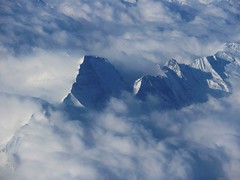March 22, 2010
Reporting Risks
 WEF Risks 2010: an interactive map of risks, as analysed by the World Economic Forum 2010 (report (pdf) here).
WEF Risks 2010: an interactive map of risks, as analysed by the World Economic Forum 2010 (report (pdf) here).
As infographics goes this is pretty nice. One gets an overview of what is linked to what, the estimated likelihood, severity and connection strengths. Clicking on a risk brings up the risks linked to it, and so on.
As risk estimation it is more problematic. What does it mean that nuclear proliferation ("Multiple states pursue nuclear armament, with associated increase in geopolitical tensions") has a 10% likelihood or chronic disease ("Chronic diseases spread rapidly throughout the developed and developing world, driving up health costs and reducing productivity and economic growth") has 20% over a ten year time period? I think we can say the likelihood of both are 100%, it is just that they are not as bad as they could be.
The problem is that the network weights and node strengths were determined by surveying various experts, and they most likely have very different views of what constitutes a real risk. Worse, it was not possible for the surveyed experts (I was one of them) to add new risk nodes. Given past experience with e.g. the Cuba crisis I think it would be unwise to give nuclear war a much lower probability than 1% per year, but this ~1-10% global catastrophic risk is not even on the list! While nanoparticles are on the list toxicity from pollution (a broader category) is not. And so on.
I expect the main reason for the risks listed are that they are what people going to the world economic forum like to discuss. Asset price collapse, food price volatility, Afghanistan instability and climate change are comfortable subjects. I suspect the risks were originally selected by what a WEF-related expert group felt were important, and that will of course bias how the respondents to the latest survey will respond. While no doubt making the WEF happy (and yes, most of these risks are worth discussing) there is a serious risk that the report will just help us watch for the same old risks. It does not help against black swans, and it seems hard for outsiders who might have candidate risks to get them in.
Maybe what we really need is a wikidisaster where anybody can propose risks and people can vote on them. Ideally combined with an prediction market that forces people to put the money where their mouths are.
Posted by Anders3 at March 22, 2010 07:37 PM